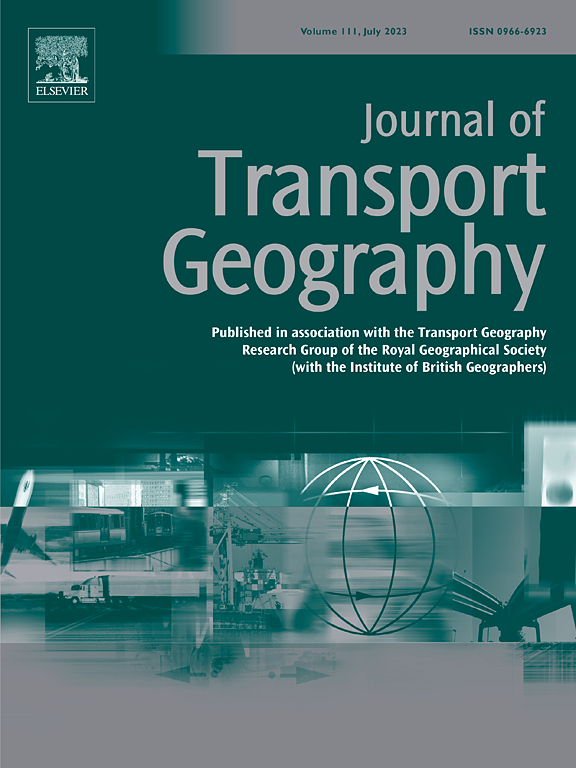Exploring the interplay of transport, social, and geographical disadvantages and its effect on perceived inaccessibility
IF 5.7
2区 工程技术
Q1 ECONOMICS
引用次数: 0
Abstract
To address transport injustice and social exclusion, the needs and perceptions of different groups of individuals seem indispensable. Consequently, perceived accessibility has received a growing interest in recent years. While it is well established that transport and social disadvantages cause transport poverty and perceived inaccessibility, only recently the relevance of geographical disadvantages has been addressed.
This paper explores the idea that an individual is more likely to experience inaccessibility if they face transport, social, or geographical disadvantages in at least two of these dimensions of transport poverty. For instance, while living in a rural area or lacking the ownership of a car may not translate into low perceived access on themselves, the combination of the two might lower perceived access. To empirically assess whether and which disadvantages indeed lower perceived accessibility further, the effect of combinations of disadvantages on perceived accessibility in rural and urban areas of the Netherlands are systematically explored using a regression analysis. Data is retrieved from the Dutch National Travel Survey. This survey includes a 1-day travel diary, measures both objective and subjective accessibility, and is administered among a representative sample of the Dutch population. In total, a large and representative sample of 22,742 participants is included in the analysis.
Results highlight that rural-living individuals only perceive inaccessibility if they indeed encounter one or more transport and/or social disadvantages as well. Also, not possessing a driver's license determines perceived inaccessibility to a larger extent than a lack of car ownership. Lastly, possessing an e-bike is beneficial for the elderly in both rural and urban Dutch areas. The research findings may support policymakers and practitioners in tailoring policy interventions towards the needs of individuals who suffer from multiple disadvantages.
探索交通、社会和地理劣势的相互作用及其对无法到达感的影响
本文章由计算机程序翻译,如有差异,请以英文原文为准。
求助全文
约1分钟内获得全文
求助全文
来源期刊

Journal of Transport Geography
Multiple-
CiteScore
11.50
自引率
11.50%
发文量
197
期刊介绍:
A major resurgence has occurred in transport geography in the wake of political and policy changes, huge transport infrastructure projects and responses to urban traffic congestion. The Journal of Transport Geography provides a central focus for developments in this rapidly expanding sub-discipline.
 求助内容:
求助内容: 应助结果提醒方式:
应助结果提醒方式:


